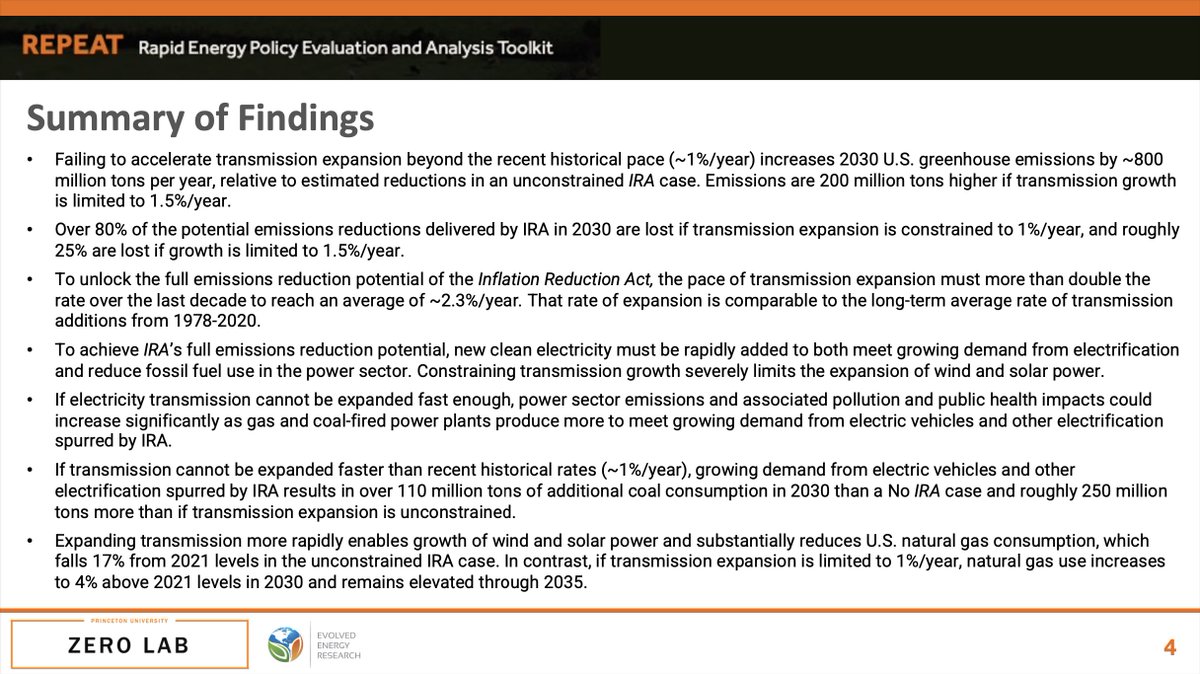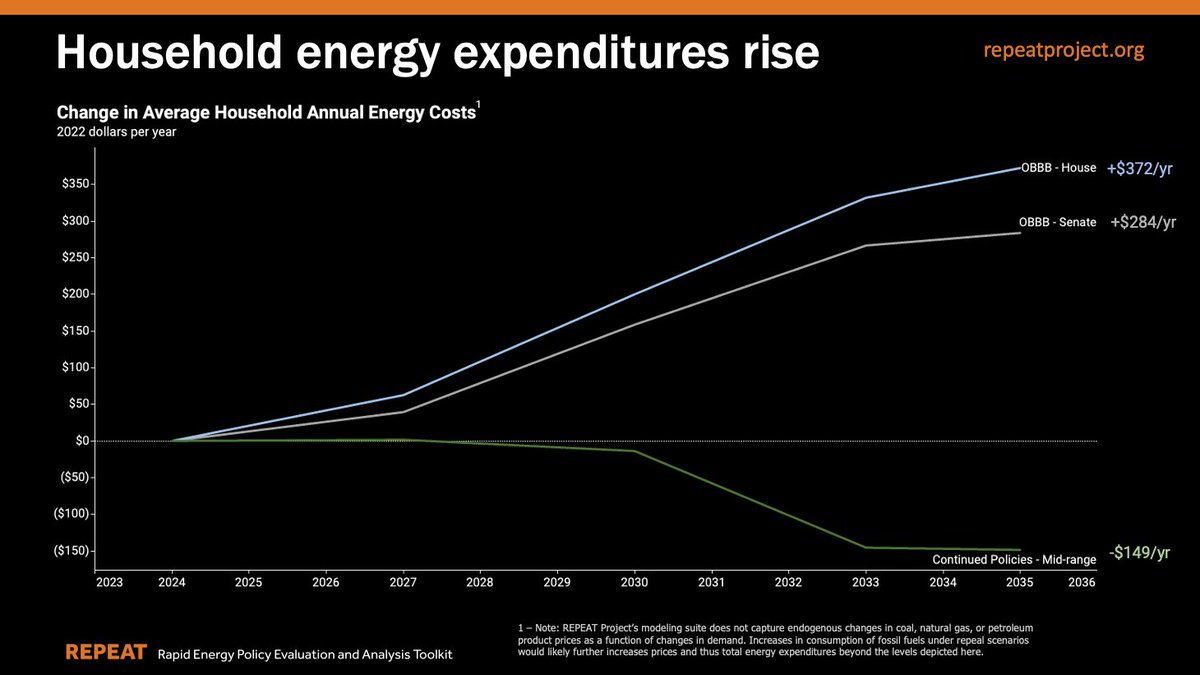NEW REPEATProject.org analysis out on the importance of electricity transmission expansion to unlock the full emissions reduction potential (& health benefits) of the #InflationReductionAct: repeatproject.org/docs/REPEAT_IR…
Read on to learn why 100s of millions of tons are at stake.



Read on to learn why 100s of millions of tons are at stake.




First, this report does NOT model the impacts of the proposed 'permitting reform' bill being debated now. We began this work soon after finishing our analysis of IRA (repeatproject.org/docs/REPEAT_IR…) because expanding clean electricity is THE linchpin driving emissions cuts under IRA. 

Previously, REPEAT Project estimated that IRA could cut U.S. greenhouse gas emissions by roughly one billion tons per year in 2030 and reduce cumulative greenhouse gas emissions by 6.3 billion tons of CO2-equivalent over the decade (2023-2032). 

BUT, that outcome depends on more than doubling the historical pace of electricity transmission expansion over the last decade in order to interconnect new renewable resources at sufficient pace and meet growing demand from electric vehicles, heat pumps, & other electrification. 

To meet growing demand for electricity, which we estimate could rise by ~24% by 2030 & ~43% by 2035, AND drive down power sector emissions and coal & gas use, we are going to need a bigger grid. Our original IRA analysis envisions 2.3%/year avg expansion of high-voltage capacity. 

That pace is >2x the ~1%/yr rate over the past decade and slightly faster than the ~2%/year average expansion rate from 1978-2020 (credit Michael Cembalest: assets.jpmprivatebank.com/content/dam/jp…).
So this study explores alternative scenarios that constrain transmission to 1%, 1.5% & 2%/yr.

So this study explores alternative scenarios that constrain transmission to 1%, 1.5% & 2%/yr.


Findings:
1. Failing to accelerate transmission expansion beyond the recent historical pace (~1%/yr) increases 2030 GHG by ~800 million tons relative to estimated reductions in an unconstrained IRA case. Emissions are 200 Mt higher if transmission growth is limited to 1.5%/year.
1. Failing to accelerate transmission expansion beyond the recent historical pace (~1%/yr) increases 2030 GHG by ~800 million tons relative to estimated reductions in an unconstrained IRA case. Emissions are 200 Mt higher if transmission growth is limited to 1.5%/year.

2. Over 80% of the potential emissions reductions delivered by IRA in 2030 are lost if transmission expansion is constrained to 1%/year, and roughly 25% are lost if growth is limited to 1.5%/year. 

3. To achieve IRA’s full emissions reduction potential, new clean electricity must be rapidly added to both meet growing demand from electrification & reduce fossil fuel use in the power sector. Constraining transmission growth severely limits the expansion of wind & solar power. 

4. If electricity transmission cannot be expanded fast enough, power sector emissions & associated pollution & health impacts could increase significantly as gas ^ coal-fired power plants produce more to meet growing demand from electric vehicles and other electrification. 

5. If transmission cannot be expanded faster than recent historical rates, growing demand from EVs and electrification drives over 110 million tons of additional coal consumption in 2030 vs No IRA case & roughly 250 Mt more than if transmission expansion is unconstrained. 

6. Expanding transmission more rapidly enables growth of wind & solar and reduces natural gas consumption 17% vs 2021 levels. In contrast, if transmission expansion is limited to 1%/year, natural gas use increases to 4% above 2021 levels in 2030 and remains elevated through 2035. 

In sum, hundreds of millions of tons per year of greenhouse gas emissions and our ability to drive down coal & natural gas use + associated pollution are contingent on our ability to accelerate the expansion of electricity transmission & deploy renewable electricity at scale.
For more, read the full report repeatproject.org/reports
Some additional context
https://twitter.com/JesseJenkins/status/1573092910392020993?t=w38EduBa_ufDsBJ-leuW1A&s=19
• • •
Missing some Tweet in this thread? You can try to
force a refresh

















